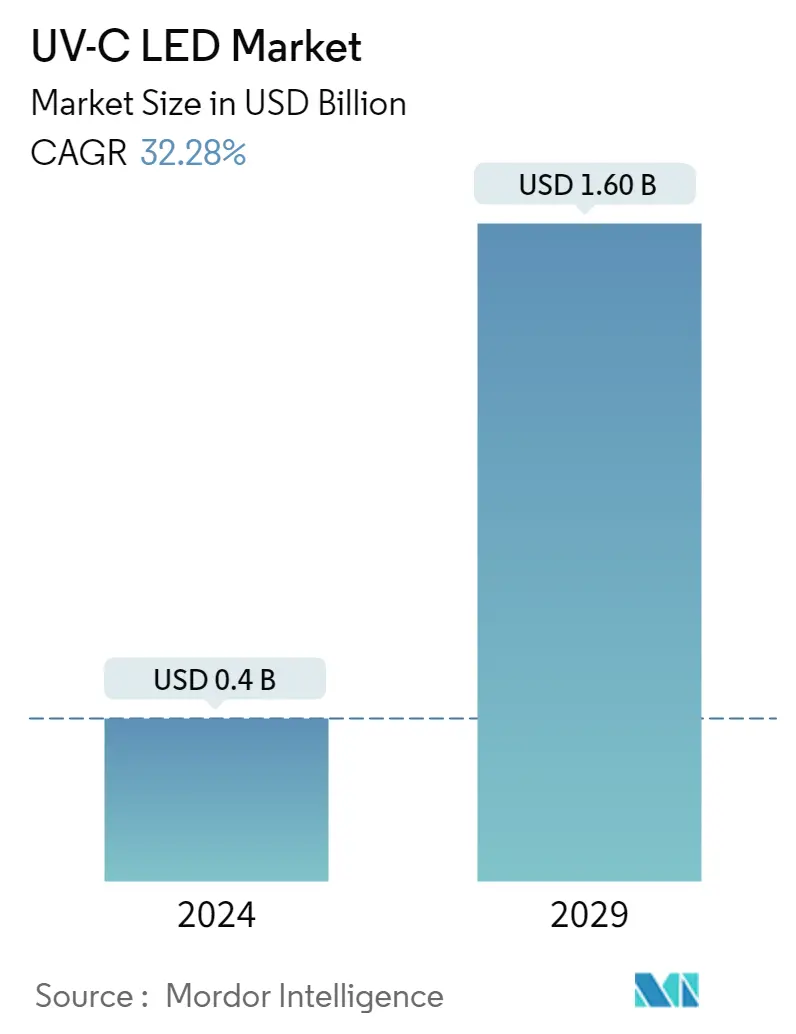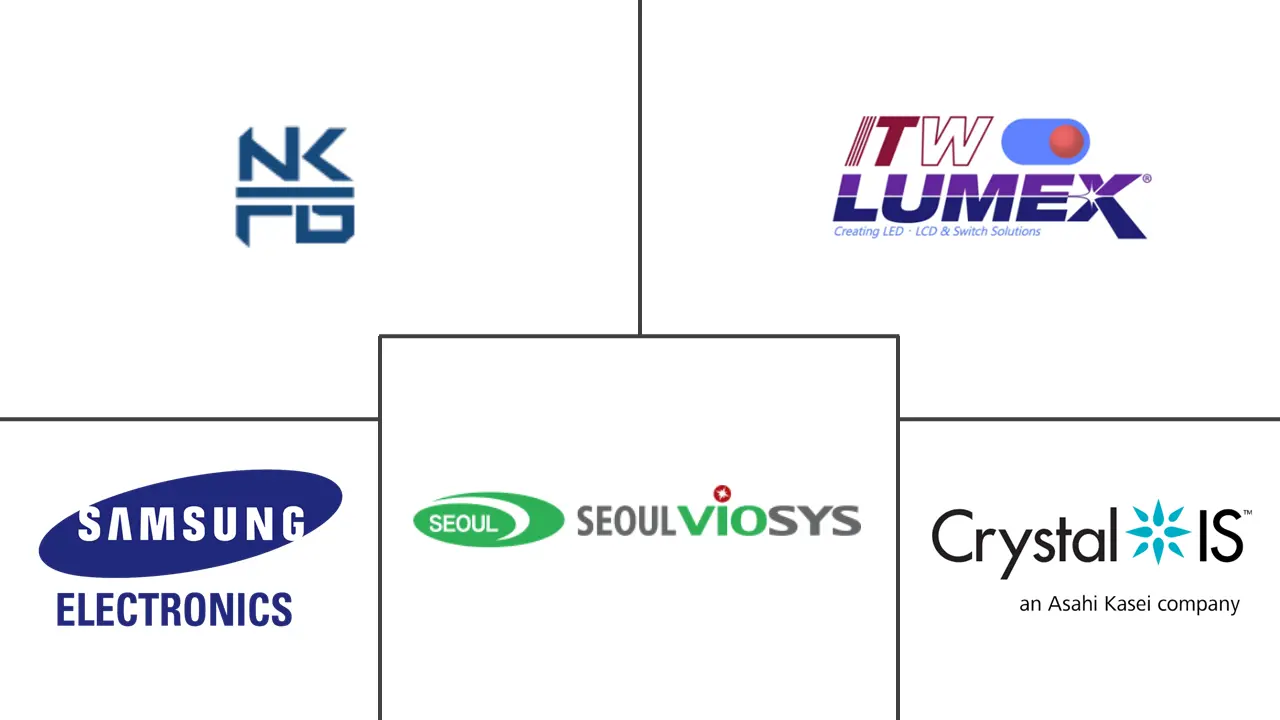Market Size of UV-C LED Industry

| Study Period | 2018 - 2028 |
| Market Size (2023) | USD 0.3 Billion |
| Market Size (2028) | USD 1.21 Billion |
| CAGR (2023 - 2028) | 32.28 % |
| Fastest Growing Market | North America |
| Largest Market | Asia-Pacific |
Major Players
*Disclaimer: Major Players sorted in no particular order |
Need a report that reflects how COVID-19 has impacted this market and its growth?
UV-C LED Market Analysis
The UV-C LED Market size is estimated at USD 0.30 billion in 2023, and is expected to reach USD 1.21 billion by 2028, growing at a CAGR of 32.28% during the forecast period (2023-2028).
UV-C LEDs produce UV photons through the electroluminescence of a semiconductor crystal. These semiconductor crystals are typically made of AlGaN compounds grown on sapphire or AlN substrates. These solid-state devices contain no mercury and do not rely on other substances that are subject to environmental restrictions. As a result, they may provide a regulatory-proof alternative to traditional mercury-containing UV lamps.
- During the forecast period, the incorporation of UV-C LED into consumer goods and home appliances is anticipated to present a significant opportunity for the growth of the UV-C LED market. Improvements in output power and reliability and the recent unit cost price reduction for UV-C LEDs are additional factors significantly fueling the market growth.
- The technology of UV-C LEDs is gradually becoming better. The commercialization of water purification and disinfection has resulted in a sizeable market for the products. This is one of the factors driving UV-C LED demand globally. UV-C LEDs provide a focused wavelength for selective and targeted measurements.
- Moreover, UV-C LEDs offer surface and air disinfection in addition to water. In the commercial environment, the use of UV-C LED air purifiers for HAVC (heating, ventilation, and air conditioning) is rising. UV-C LEDs are finding new services in a wide range of industries, including residential, commercial, healthcare, transportation, life sciences, defense, and emergency response.
- The thermal management of UV-C LEDs is a major problem because the technology is still in its infancy. LEDs are extremely heat-sensitive, just like any other electronic component. UV-C LEDs only convert about 5% of the input power into light, which is a particularly low external quantum efficiency (EQE) for LEDs. Heat is created by converting the remaining 95% of the power.
- The COVID-19 outbreak had affected the expansion of the global UV-C LED market. It sparked a meteoric rise in interest in germicidal ultraviolet (UV) technology. SARS-CoV-2 and other pathogens can be rendered inactive on surfaces, in the air, and in water by UV-C band radiation (100-280 nm) produced by conventional or LED sources. Around the world, numerous universities and laboratories are creating UV-C LED-based products to stop the spread of infections. As a result, COVID-19 boosted the market's growth.
